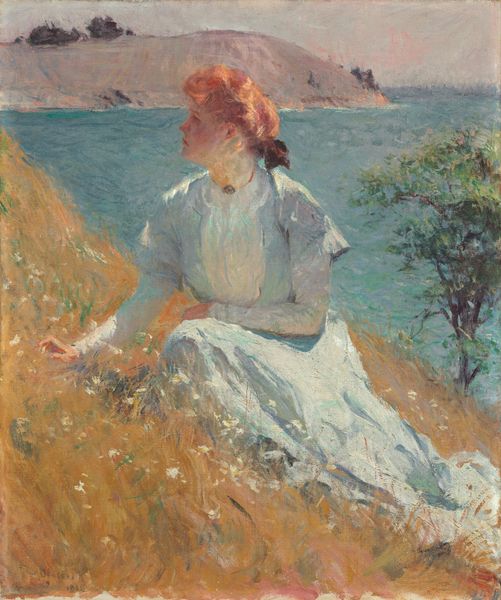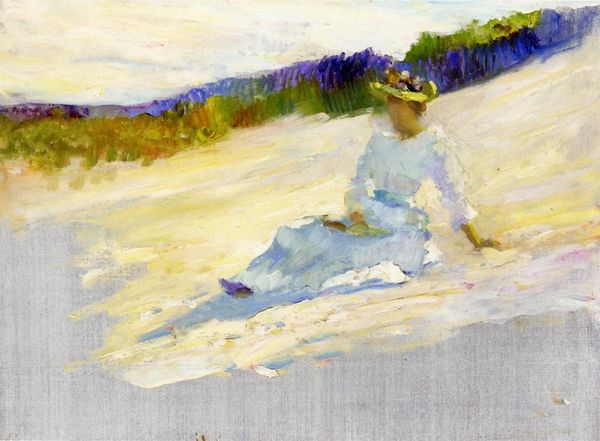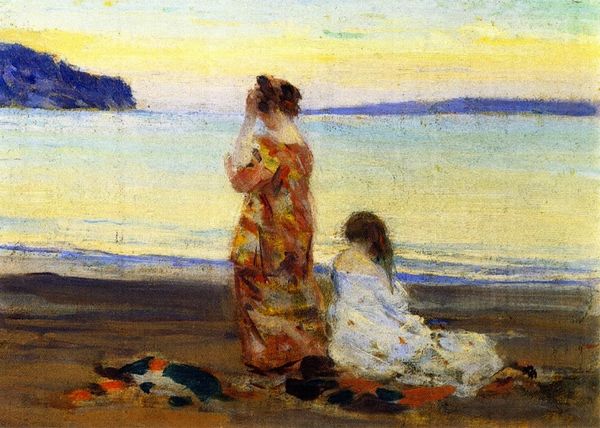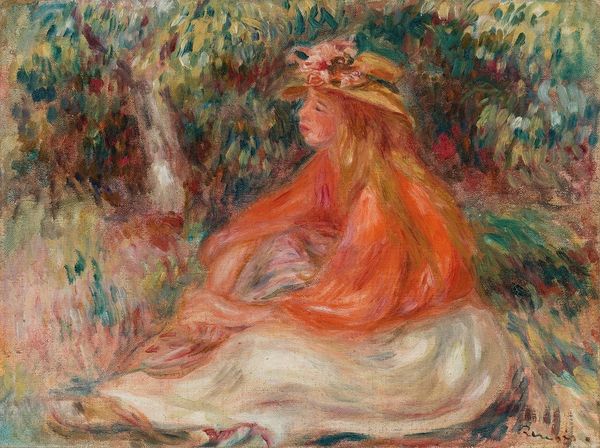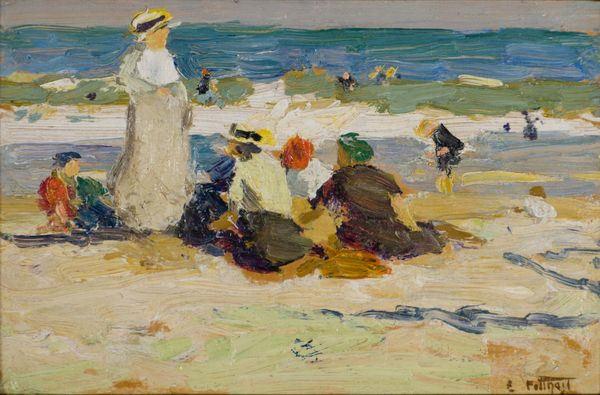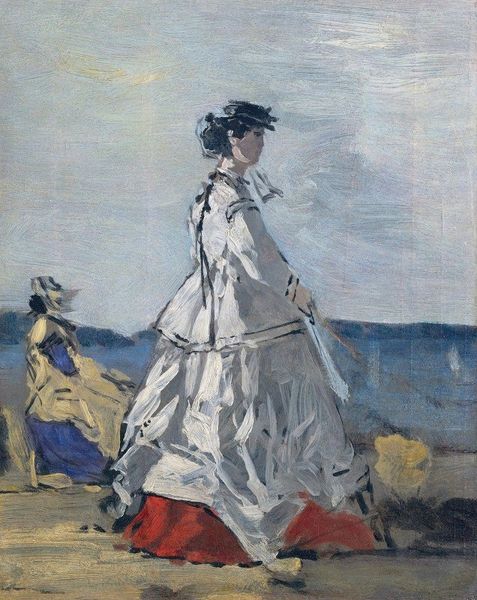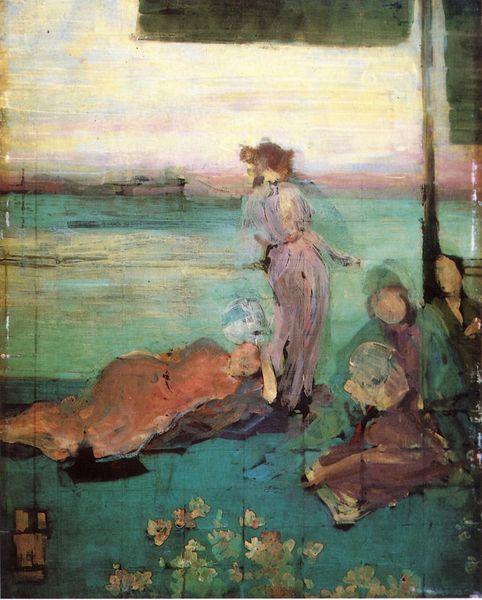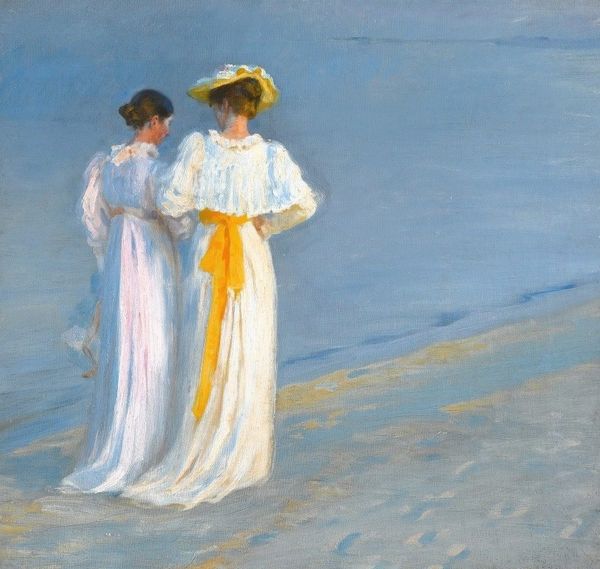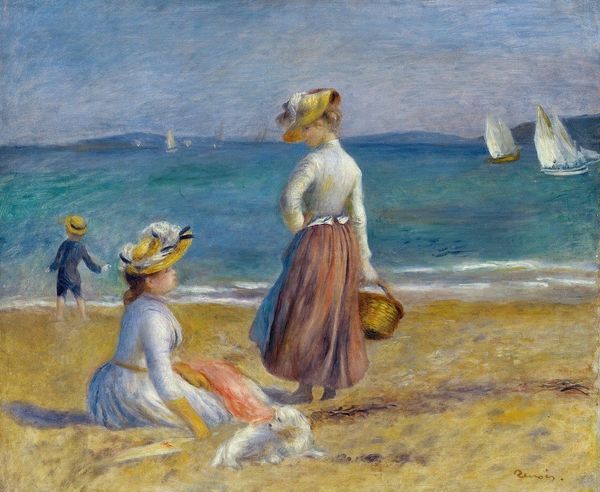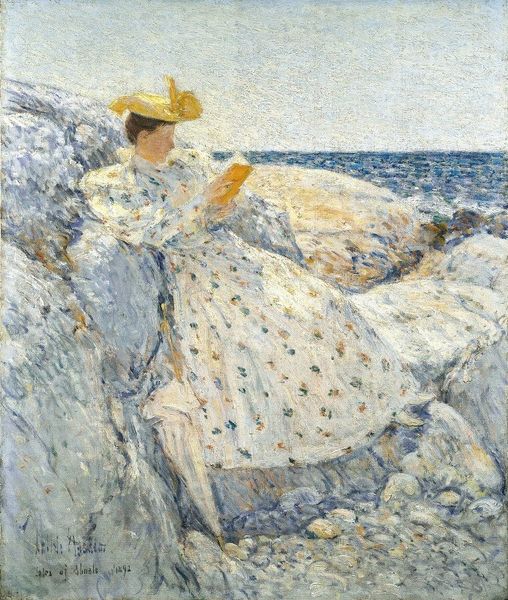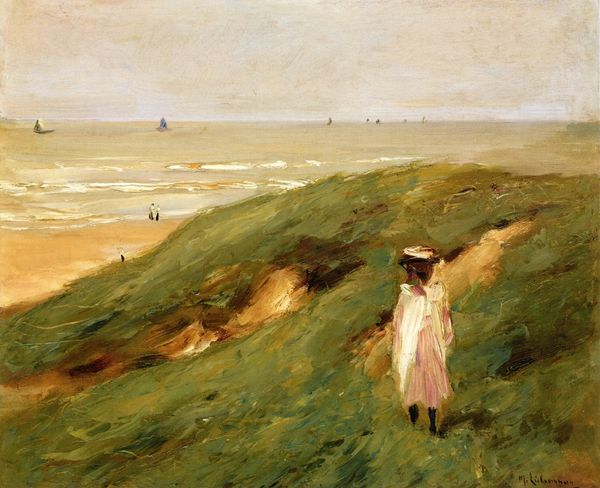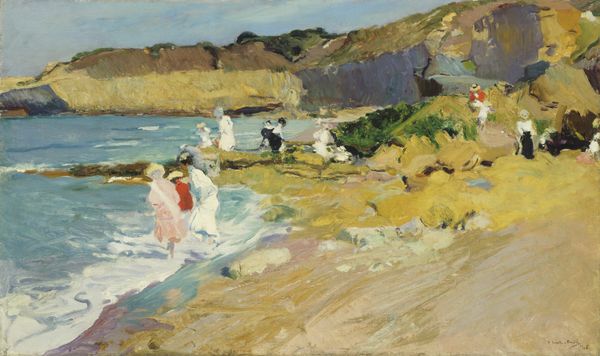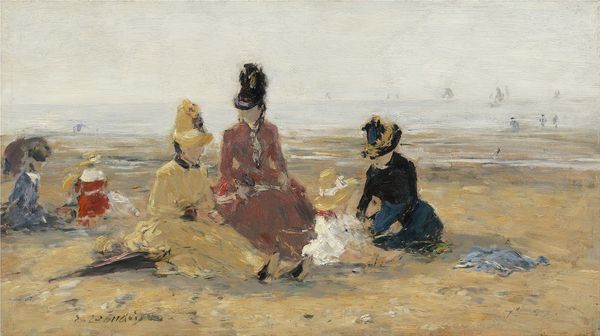
Copyright: Public domain
Editor: Let's talk about "Girl on the Headland," a 1906 oil painting by Frank Benson. I find the figure captivating; she's positioned so the vast sea is in view, a moment seemingly caught in time. What captures your attention most? Curator: This painting offers a glimpse into the artistic priorities of the early 20th century. Benson, an American Impressionist, frequently depicted women in leisure settings, but I find the painting's presentation within museum culture particularly interesting. It reinforces ideas about femininity, class, and leisure accessible only to certain demographics. Do you notice how her white dress signifies affluence? Editor: Yes, the dress immediately suggests a certain status, almost like a uniform of the upper class at leisure. How was Impressionism received in the U.S. versus Europe? Curator: In America, Impressionism signaled a certain cultural sophistication and a break from academic art traditions. The museums and galleries displaying such works often aimed to elevate public taste. Benson’s success here underscores how artistic movements become tools for defining national identity and social values, influencing societal perceptions and the power dynamics in visual representation. How do you interpret her gesture, shielding her eyes? Editor: That's interesting! Maybe it's about perspective, her gaze hinting at future aspirations, or maybe a subtle sign of the anxieties and uncertainties lurking beneath the surface of turn-of-the-century life? I never considered the social factors that went into curating a painting like this in a museum. Curator: Exactly! Examining those social and political factors reveals how art is never truly neutral but a product of its environment. We've explored not just the beauty but its loaded presentation.
Comments
No comments
Be the first to comment and join the conversation on the ultimate creative platform.
